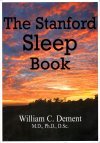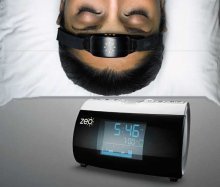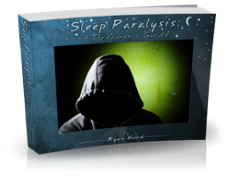
| Connect & Subscribe |
A Letter To The Editors
An Outreach Project by Marcia Foti | Return To Outreach Projects 2010
To The Editor,
In America, there are few pressing topics so alarming as the lack of sleep that the general population possesses. To make things worse, people do not understand simple sleep knowledge that, every year, could save hundreds of lives. All that is needed is some simple education on sleep and the consquences of sleep deprivation. A large portion of these deaths occurs in automobile accidents where one of the drivers holds a large sleep debt.
Sleep debt is the overall compilation of sleep lost, calculated by subtracted the amount a person did sleep from the amount of sleep a person needs on average, disregarding prior sleep debt. These values from each day are added together to calculate the overall sleep debt. While a person can frequently function on a small sleep debt, there are great dangers associated with a large sleep debt. A large sleep debt leads to decreased performance, inability to perform complex tasks, unstable moods, and decreased motivation.
When sleep debt is large, there are serious dangers associated with driving. Due to decreased performance and slower reaction times, driving becomes, quite literally, a dangerous and deadly sport. Over 20% of drivers report having fallen asleep at the wheel at some point in their lives. Every year, the National Highway Traffic Safety Administration estimates, conservatively, that, "drowsy driving" causes 100,000 automobile wrecks, 71,000 injuries, and 1,550 fatalities. Drowsy driving accidents are frequently more serious than other wrecks because they often occur on high speed highways, there is no attempt to avoid the crash since the driver's eyes are closed and the driver is usually alone with no one to rouse him or her.
Given the severity of these accidents, it is alarming to think that many long-haul truck drivers tend to sleep only two to four hours per night and drive for long stretches on high speed highways. This places them at high risk of posing a danger to themselves and other drivers on the roads. Another segment of the adult population that is especially vulnerable to drowsy driving are shift workers. These workers are in the top three populations at the highest risk for drowsy driving automobile accidents. Indeed, the Exxon Valdez oil spill was an example of such an accident caused by extremely tired shift workers, the officer in control having been awake for nearly eighteen hours preceding the accident.
However, we should not despair. These sorts of accidents can be prevented with a little education. Everyone needs to understand that sleep is a priority and the consequences of carrying a large slept debt. If someone is carrying a large sleep debt, they need to make an effort to reduce it - sleep a little more than their average amount, until they have little to no drowsiness during the day, signaling their sleep debt, if still there, is within safe levels. If they cannot make that effort to reduce it, they need to seek alternative transportation, such as public transportation. If this option is not open to them, then they must remember the famous mantra of Stanford sleep researcher Dr. William Dement, "Drowsiness is Red Alert!" When they begin to feel tired on the road, they should pull over and take a nap before continuing.
If knowledge about sleep debt and the dangers it poses were told to the general population, then many deaths and more automobile accidents could be prevented. Thus, one of our top priorities in our nation must be sleep education.
Sincerely,
Marcia Foti
Works Consulted:
Dement, William C. The Stanford Sleep Book. United States: Stanford University, 2002.
The State of Alaska. Alaska Oil Spill Commission. The Wreck of the Exxon Valdez. Juneau: Alaska, 1990. 5-14.
"Sleep Debt and Sleep Deprivation." Sleepdex: Resources for Better Sleep. Sleepdex. 19 Feb. 2010.
My To The Editor" letter was distributed all over, as in reality that was my goal. I wished to reach as many people as possible to teach this simple lesson on sleep debt and the correlation with severe automobile accidents. The publications to whom I sent my letters were the Stanford Daily, the Stanford Review, The NY Times, the Wall Street Journal, the Washington Post, the Philadelphia Inquirer, the Greenwich Times and USA Today. However, as I only sent out my letter a few days ago, I have yet to receive any replies, which is hardly surprising. I will, however, keep you updated as to the number of replies I receive, as well as any print publications of my letter.
Return To Outreach Projects 2010
Go from Marcia's Letter to the Editors to Important Info on Sleep Debt
About This Site
Welcome! This site is continuously being created by students of Dr. William C. Dement's Sleep And Dreams course at Stanford University.
We made this site as a call to action for people all over the world to live healthier, happier, safer, and more productive lives by learning about their own sleep. We have faith that reading the information provided on this site will motivate you to be smart about your sleep deprivation and strategic about your alertness in order to live life to your fullest, most energetic potential.
In fact, we challenge you to do so! What do you say, are you up for the challenge?
Interviews With Sleep Specialists: Insights Into the Worlds of Sleep Medicine & Sleep Business
America's Most Dangerous Disorder: What Is Sleep Apnea Doing To Your Sleep?
Sleep Debt: How Much More Will You Achieve When You Reduce Yours?
The Stages Of Sleep: The Journey Through The Night
Delayed Sleep Phase: You Want To Sleep But You're Not Tired Yet
Paralyzed at Night: Is Sleep Paralysis Normal?
Sleep In Words: Smart, Strange, and Funny Quotes About Sleep
Sleep Disorders In Children: What's Keeping Your Child From A Full Night's Rest?
Attacks of Pavor Nocturnus (a.k.a. Sleep Terrors, Night Terrors, or Incubus Attacks)
The Stanford Sleep Book
Dr. Dement's pioneering textbook has been the core text for Sleep and Dreams since 1980, but it has just recently been made available to the wider public for the first time.
In it you'll find a more detailed account of the most important things you need to know about sleep, alertness, dreams, and sleep disorders. Studies, statistics, plus plenty of Dr. Dement's classic anecdotes painting the history of sleep medicine.
Preface | Intro | Contents | Get A Copy
More Sleep Resources
The Zeo
A revolution in personal sleep tracking, the Zeo is a wireless headband that transmits your brainwaves in realtime to a dock (pictured here) or your smartphone. The result? You can wake up and see exactly what stages of sleep you were in during the night! Unprecedented personalized sleep knowledge.
Sleep Paralysis: A Dreamer's Guide
Ever woken up paralyzed? A surprising number of us have, believe it or not. But few know the actual causes of this phenomenon, and fewer still how to exert control over it. Dream researcher and sleep paralysis expert Ryan Hurd shares breakthrough insights into how to do just that.
Important Disclaimer
Please Note:
The information found on this page and throughout this site is intended for general information purposes only. While it may prove useful and empowering, it is NOT intended as a substitute for the expertise and judgments of healthcare practitioners.
For more info, see our
Terms of Use.









